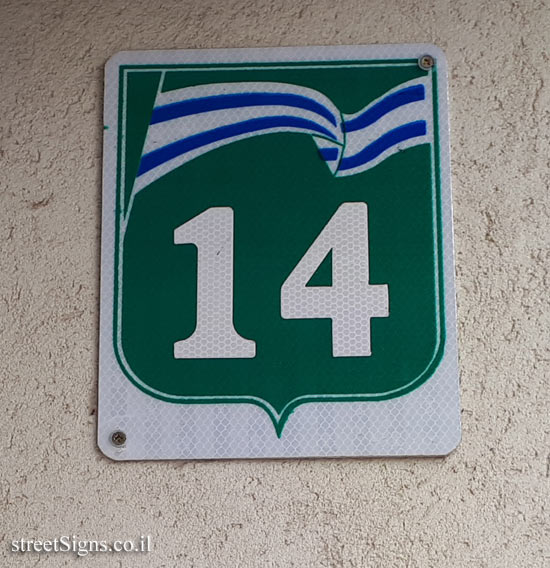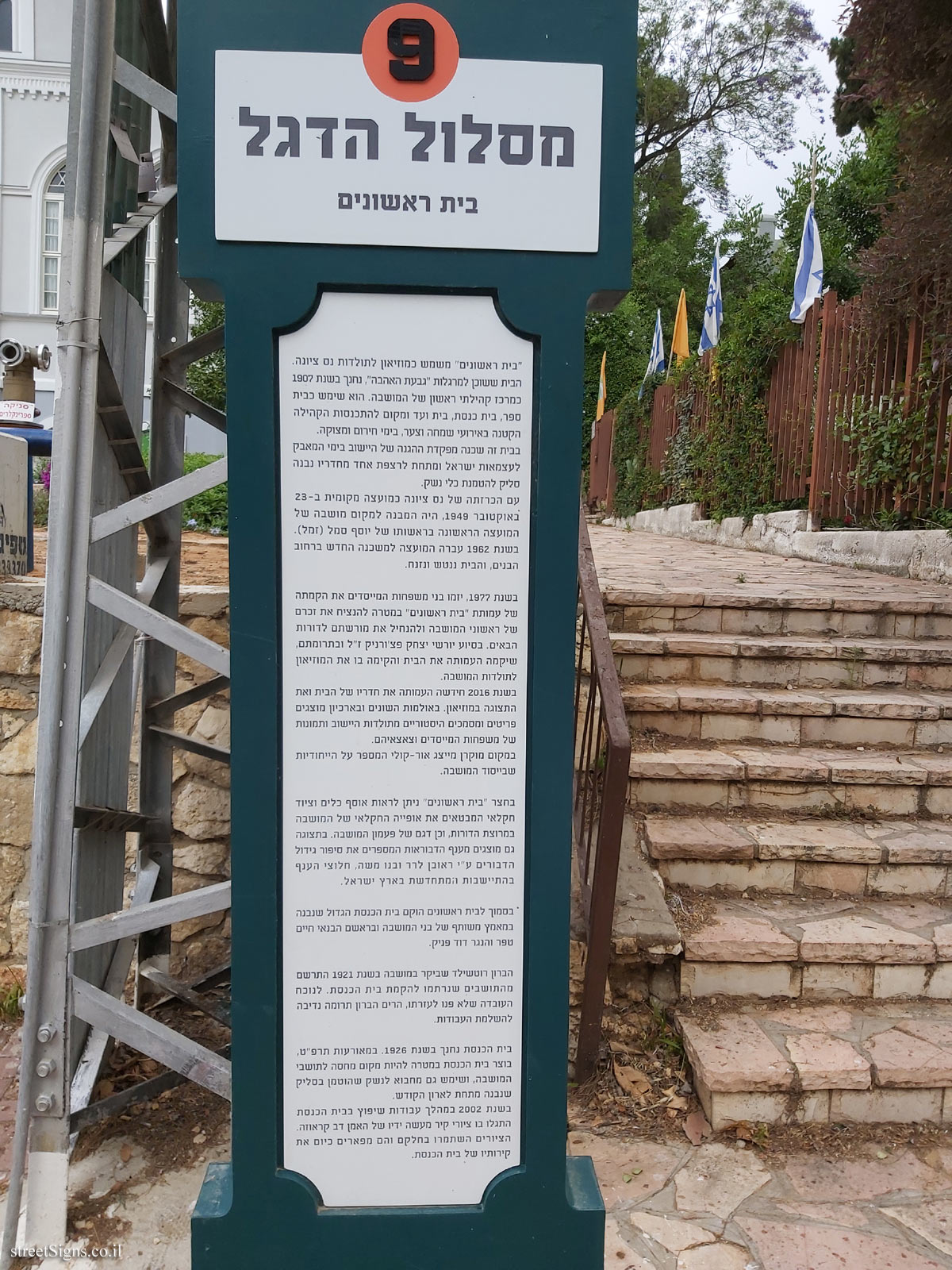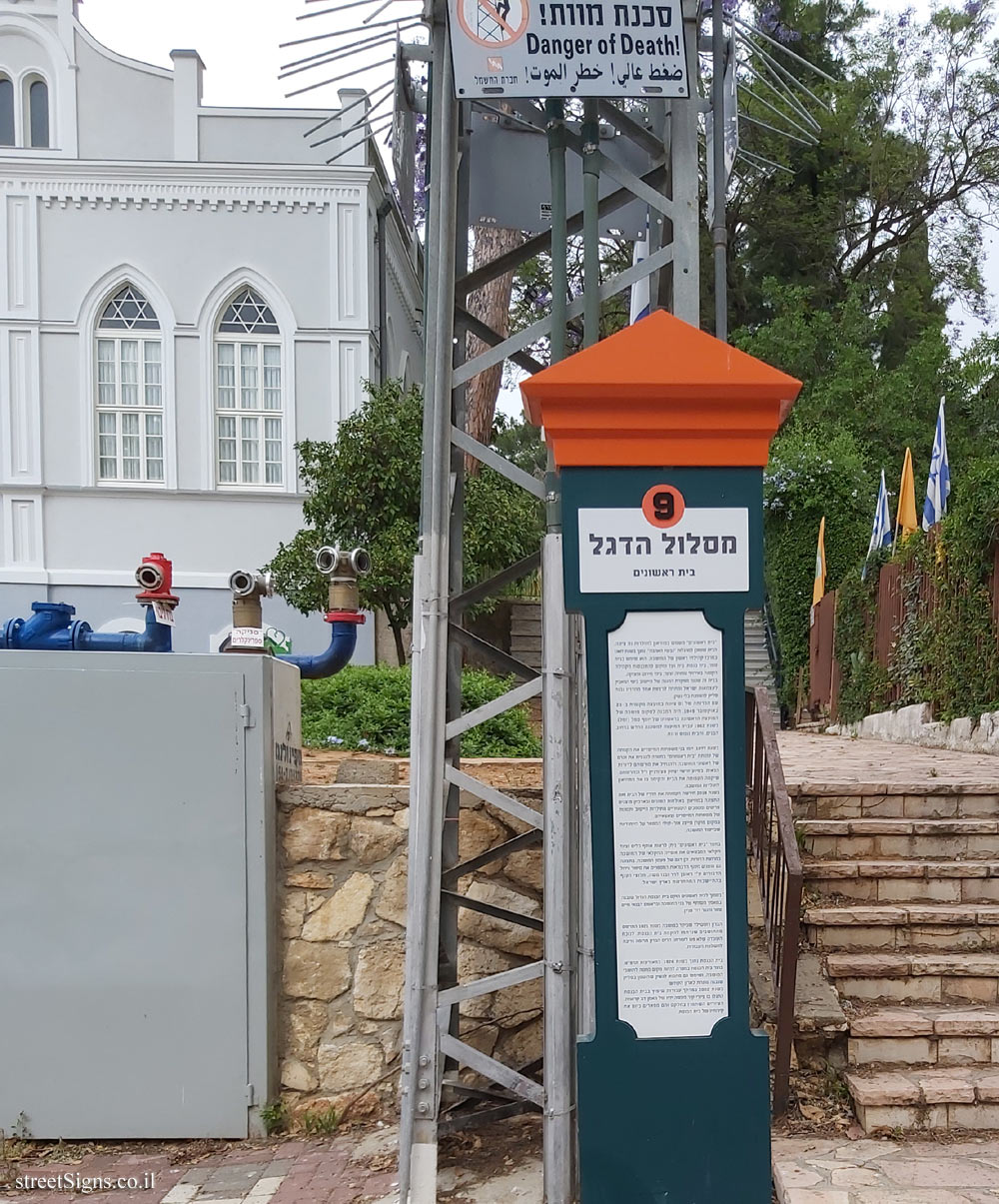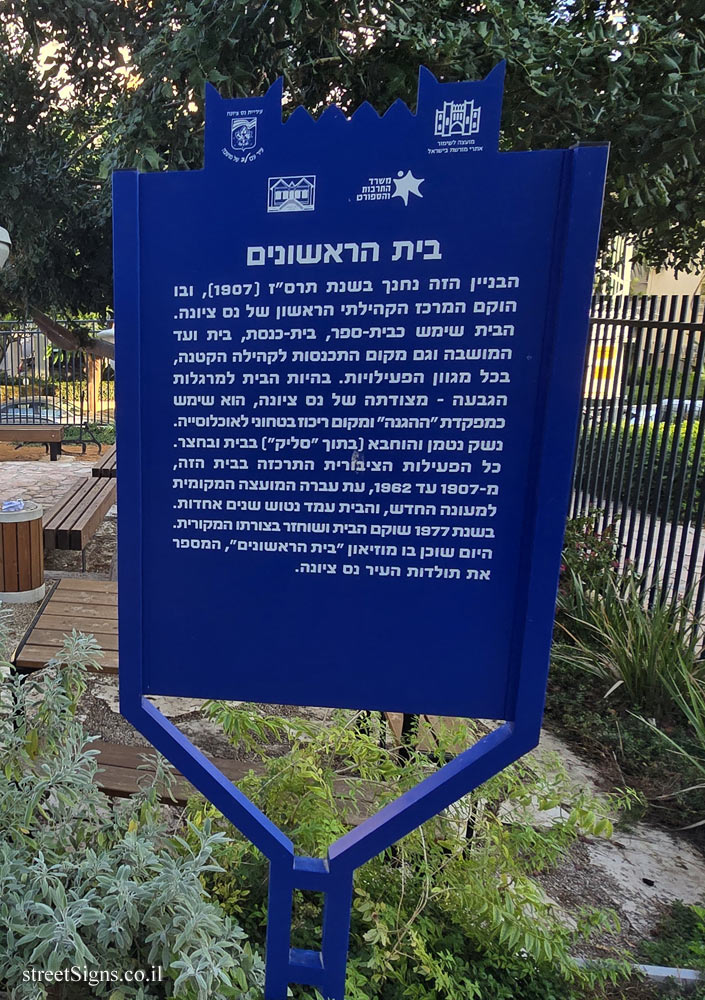Station # 9 on the Ness Ziona Flag trail, a route that describes historical points in the history of Ness Ziona.
Raising the Israeli flag for the first time after which the route is named, plays an important role in Ness Ziona’s legacy, the flag appears in the city’s emblem, and even the city’s house numbers contain this motif
 Click for sign's details
Click for sign's details The following image enlarges the text on the sign
 Click for a larger image
Click for a larger image The Founders House is seen (in part) in the next photo taken that day
 Click for a larger image
Click for a larger image The house also appears on the site as a heritage site
 Click for sign's details Translation of the text on the sign
Click for sign's details Translation of the text on the sign:
9
The Flag trail
Founders House
"Beit Rishonim" serves as a museum for the history of Ness Ziona. The home, located at the foot of "Love Hill," was inaugurated in 1907 as the first community center of the colony. It served as a school, a synagogue, a committee and a place for gathering the small community in events of joy and sorrow, in times of emergency and distress.
In this house, the Yishuv’s defense headquarters was located during the struggle for Israeli independence, and under the floor of one of its rooms, a stash was built to lay weapons.
With the declaration of Ness Ziona as a local council on October 23, 1949, the building was the seat of the first council chaired by Joseph Simmel (Zeml).
In 1962 the council moved to the new place on HaBanim Street, and the house was abandoned.
In 1977, founding families initiated the founding of the "Beit Rishonim" association with the aim of commemorating the memory of the founders of the colony and imparting their legacy to future generations. With the help of the heirs of the late Isaac Patchornik and their donation, the association rebuilt the house and established the Museum of the History of the Colony.
In 2016, the association renewed its home rooms and museum display. The various halls and archives display historical items and documents from the settlement’s history and pictures of the founding families and their descendants.
In the house is projected an audio-video display that tells of the uniqueness of the colony.
The "Beit Rishonim" courtyard contains a collection of tools and agricultural equipment that express the agricultural character of the colony over the generations, as well as a model of the colony bell. The display also shows the bee branch that tells the story of bee rearing by Reuben Lerer and his son Moshe, pioneers of the bee branch in the renewed settlement in Israel.
Adjacent to Rishonim, the "Great Synagogue" was erected in a joint effort by members of the colony, led by the builder Haim Tepper and the carpenter David Panik.
Baron Rothschild, who visited the colony in 1921, was impressed by the residents who were committed to the establishment of the synagogue. Given the fact that they did not turn to his help, the Baron made a generous contribution to the completion of the works.
The synagogue was inaugurated in 1926. During the 1929 Palestine riots, the synagogue was fortified with the aim of being a shelter for the residents of the colony, and also served as a hideout for weapons that were buried in a slick built under the Holy Ark..
In 2002, during the renovation work in the synagogue, the artist Dov Krause’s hand-painted murals were discovered. The paintings are partly preserved and are now the walls of the synagogue.

 Click for sign's details
Click for sign's details  Click for a larger image
Click for a larger image  Click for a larger image
Click for a larger image  Click for sign's details
Click for sign's details